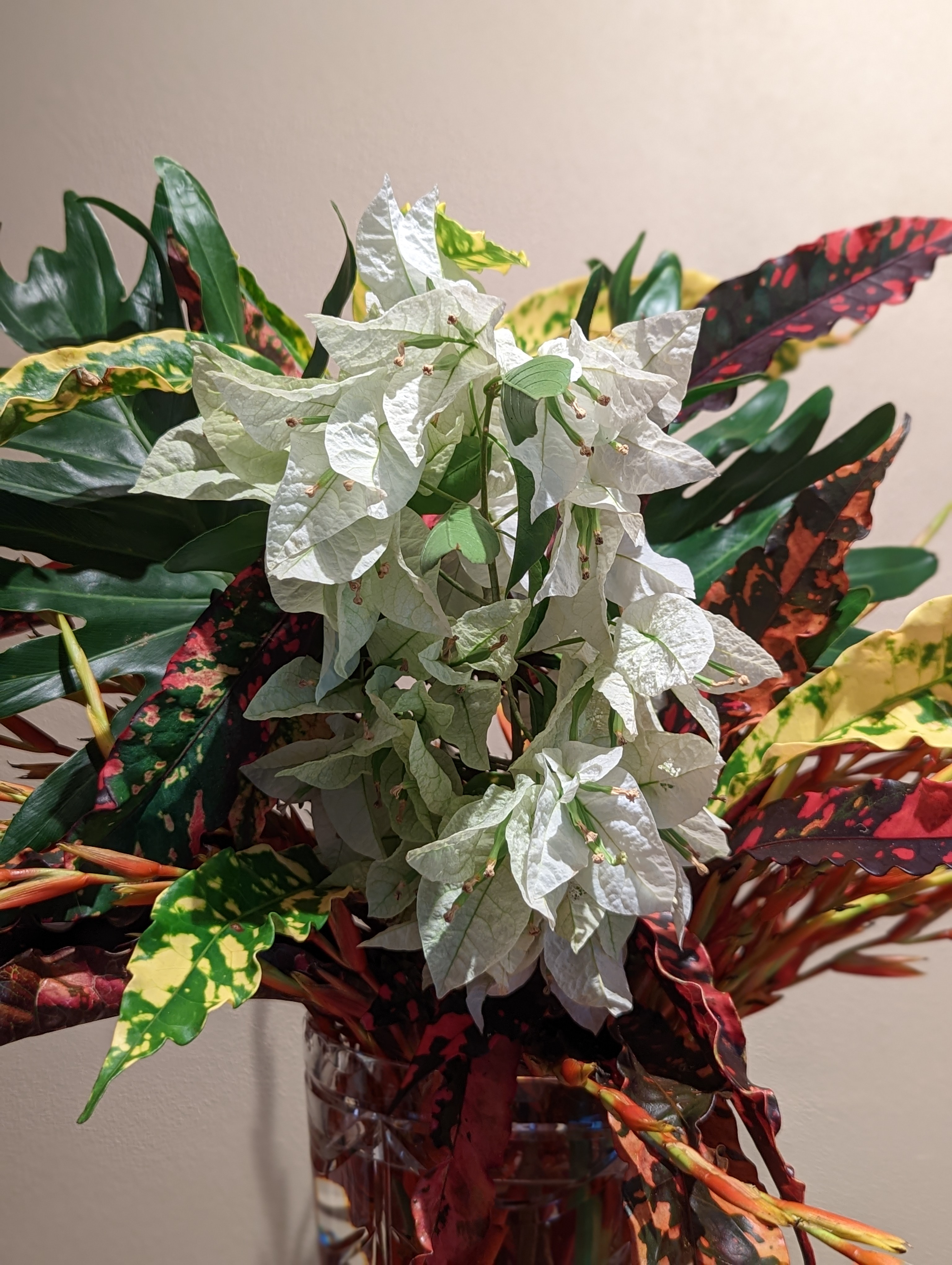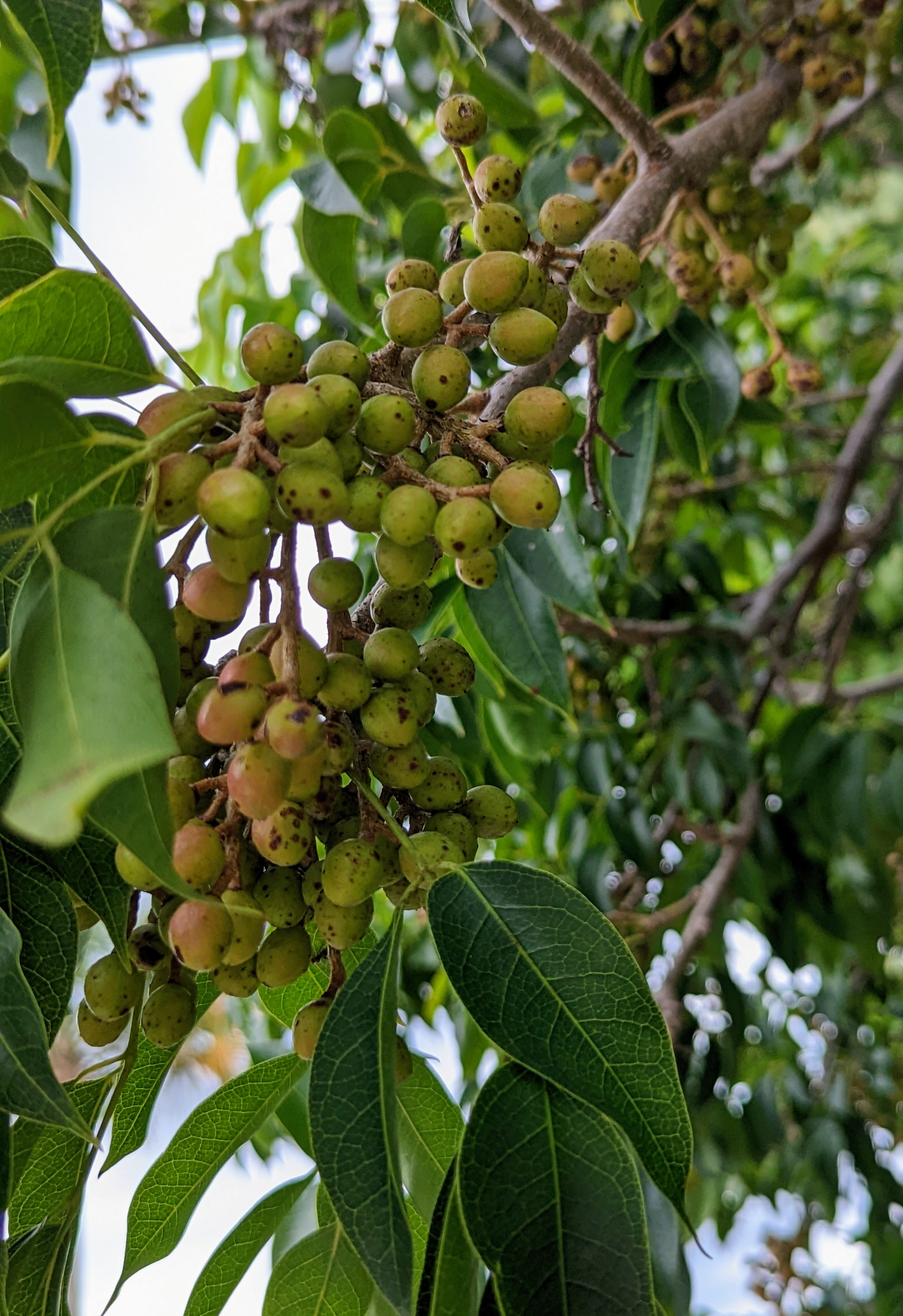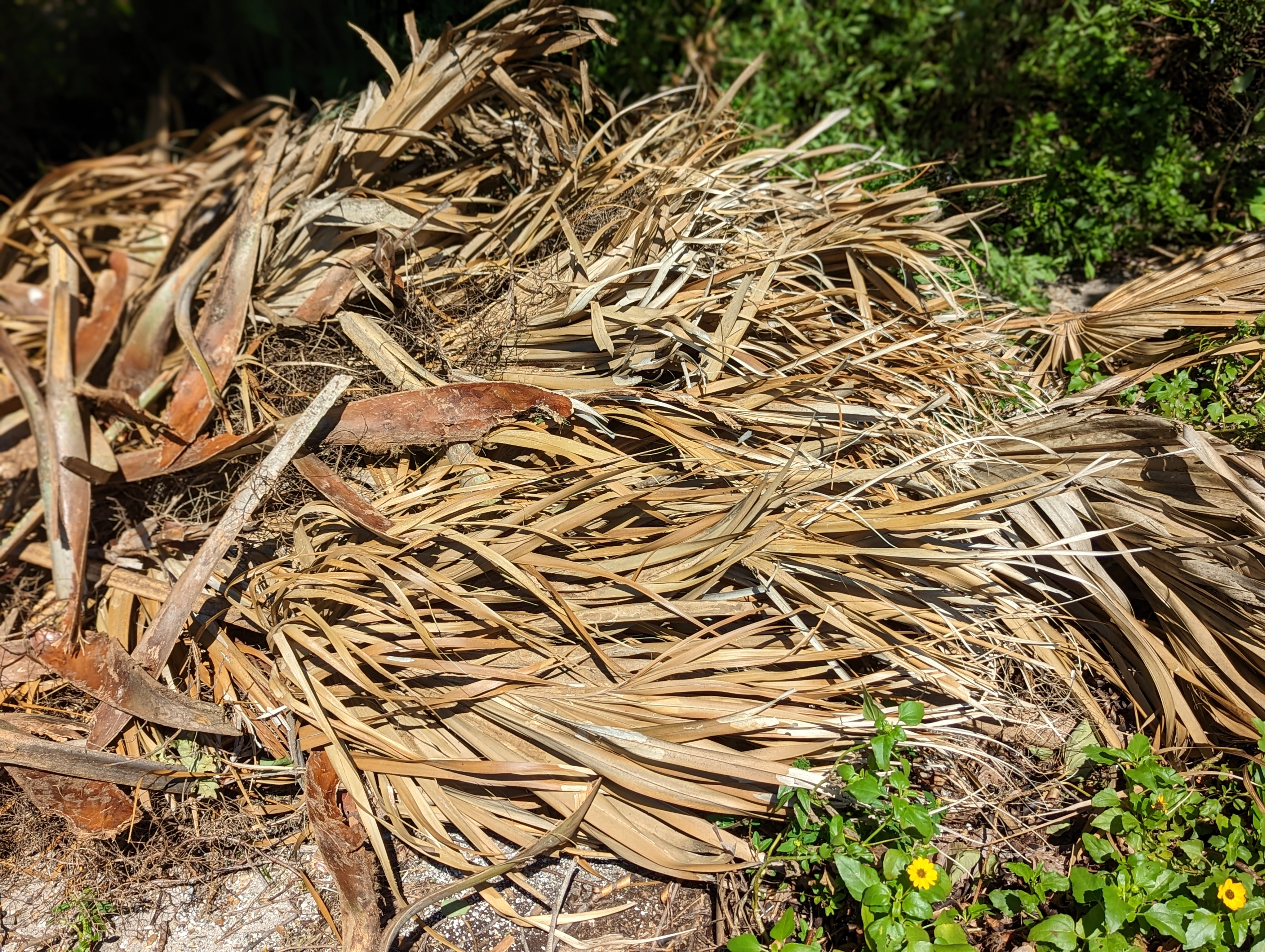
It has been rainy and windy here. Not the usual winter (dry season) weather, though the season officially starts December 1, so I suppose I should be grateful for the precipitation. The wind has blown the flowering shrubs over with the weight of the flowers flopping to the ground. A significant pruning is in order to get the Esperanza (in yellow) back in order. The white Bougainvillea is going mad with flowers and very little green growth, so I was glad to trim a few for this vase.
The Beautyberries are ending their season and whoever the birds were that enjoyed the fruit seem to have flown further south. This is the time of year for bird watching in South Florida. Flocks of birds pass through on a daily basis, lining up on power lines to rest. White herons walk on hedges to pick the gourmet insects off and Ibis are patrolling lawns with their long beaks probing for grubs. I have seen everything from hummingbirds to vultures. I never realized the extent of migration until observing the southern end.
The vase is an old florist vase I fear was used last week. Oh well. The contents:

Beautyberry (Calliocarpa americana) is coming at you! In all its purple glory. The yellow flowers are Esperanza (Tecoma stans), other common names include Yellow Elder and Yellow Bells. I like Esperanza because it means hope in Spanish. The white flowers are Miss Alice Bougainvillea, this makes a surprisingly good and long lasting cut flower.
The ferns are Boston Fern (Nephrolepis exaltata) in the back and a few sprigs of Asian Sword Fern on the side. I have noted I like to cut the Boston Fern, but don’t think it looks good in the garden. This is native here and just showed up in this odd space between a retaining wall and the fence.

I think I don’t like this because it always looks half good and half dead. On the plus side, it’s free greenery for arrangements and I couldn’t get rid of it if I tried, so my free greenery habit keeps it trimmed.
That’s my vase this Monday. To see more vases, visit Cathy at http://www.ramblinginthegarden.wordpress.com.
Is anyone else having trouble with this block weirdness on WordPress?
Happy Winter and Happy Gardening!












































